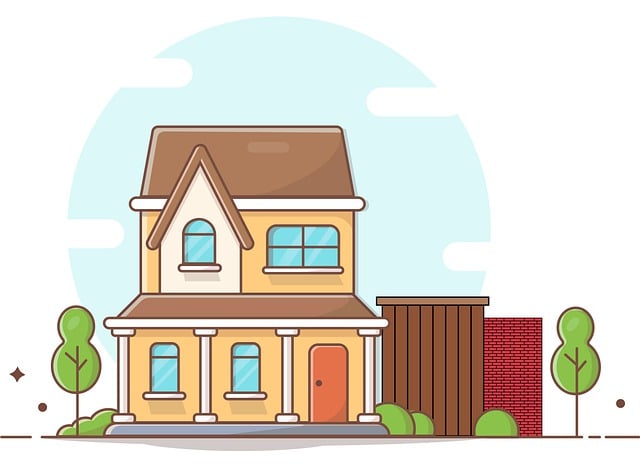Green certifications transform homes into eco-havens, reducing carbon footprints and conserving resources. Key upgrades include energy-efficient projects (solar panels, smart thermostats), renewable energy solutions (wind power, geothermal heating/cooling), low-VOC building materials, water-saving fixtures like low-flow showerheads, and efficient appliances. Prioritize energy efficiency, water conservation, and eco-conscious materials to lower bills, enhance home value, and contribute to a healthier planet through sustainable home improvements.
Looking to make your home greener and more energy-efficient? This guide offers professional insights on navigating the world of green certifications and sustainable renovations. From prioritizing energy efficiency in upgrades to selecting eco-conscious materials, we explore practical steps for a successful green renovation. Discover innovative water conservation ideas and learn about renewable energy solutions that enhance your home’s value while benefiting the environment. Implement these eco-friendly home upgrade ideas for a brighter, more sustainable future.
Understanding Green Certifications and Their Benefits for Your Home
Green certifications are a powerful way to transform your home into an eco-friendly haven, offering numerous advantages for both the environment and your pocketbook. By embracing green renovation ideas and sustainable home improvements, you contribute to a reduced carbon footprint and conserve natural resources. These certifications encourage homeowners to explore energy-efficient home projects, such as installing solar panels or smart thermostats, which can significantly lower utility bills. Additionally, incorporating renewable energy solutions like wind power or geothermal heating/cooling systems further enhances your home’s environmental sustainability.
When remodeling, opt for eco-conscious building materials known for their low volatility organic compounds (VOCs) and durability. Water-saving home fixtures, such as low-flow showerheads and dual-flush toilets, are also key components of environmentally friendly remodeling. These upgrades not only help preserve our planet’s precious resources but can increase your home’s value in the process. Embracing these green certifications is a step towards a more sustainable future while creating a comfortable and efficient living space.
Exploring Eco-Friendly Home Upgrades: Energy Efficiency First
When considering green certifications for your home, exploring eco-friendly home upgrades should start with energy efficiency. Implementing energy-efficient home projects like upgraded insulation, efficient appliances, and LED lighting is a strong first step. These renewable energy solutions not only reduce utility bills but also significantly lower your carbon footprint.
Think beyond electricity too – water-saving home fixtures and environmentally friendly building materials are other key components of sustainable home improvements. Opting for low-flow faucets, showerheads, and toilets can drastically cut down on water usage while eco-conscious building materials like recycled or locally sourced wood and biodegradable products contribute to a healthier planet.
Sustainable Home Improvements: Materials that Matter
When considering green certifications for your home, sustainable home improvements should be at the forefront of your mind. Eco-friendly upgrades go beyond aesthetics; they significantly impact your living environment and contribute to a healthier planet. Incorporating renewable energy solutions, such as solar panels or wind turbines, is a prominent step towards reducing your carbon footprint. These technologies harness natural resources, providing clean and sustainable energy for your home.
Beyond these, simple yet effective green renovation ideas include switching to eco-conscious building materials like recycled wood or bamboo. Water-saving home fixtures, such as low-flow showerheads and dual-flush toilets, are also crucial components of environmentally friendly remodeling. These changes not only conserve water but also reduce energy bills, making your home both sustainable and cost-effective.
Water Conservation and Environmentally Friendly Remodeling Ideas
Water Conservation and Environmentally Friendly Remodeling Ideas
When it comes to greening your home, water conservation is a key area where simple changes can make a significant impact. Consider installing low-flow showerheads and faucet aerators, which reduce water usage without compromising performance. You could also upgrade to water-efficient toilets that use less water per flush, or even explore the option of dual-flush models for an even greater reduction in water consumption. Additionally, implementing smart irrigation systems that sense moisture in the soil and adjust watering accordingly can help preserve this precious resource.
Beyond water conservation, sustainable home improvements like switching to energy-efficient appliances, LED lighting, and renewable energy solutions such as solar panels can further enhance your eco-friendly living space. When undertaking a green renovation, opt for environmentally conscious building materials like recycled or reclaimed wood, bamboo flooring, and non-toxic paints. These choices not only reduce your carbon footprint but also contribute to a healthier living environment. Other eco-conscious remodeling ideas include adding insulation to improve energy efficiency, installing energy-efficient windows, and incorporating natural ventilation strategies to minimize reliance on artificial cooling.
Turning your home into an eco-friendly haven is a rewarding journey that not only benefits the planet but also enhances your living space. By embracing green certifications and implementing sustainable practices, you contribute to a greener future while enjoying long-term savings. From energy-efficient upgrades to environmentally friendly materials and water conservation ideas, every step counts. Remember, even small changes can make a big difference. Start with an eco-friendly home upgrade project today and inspire others to join the movement towards a more sustainable future.
